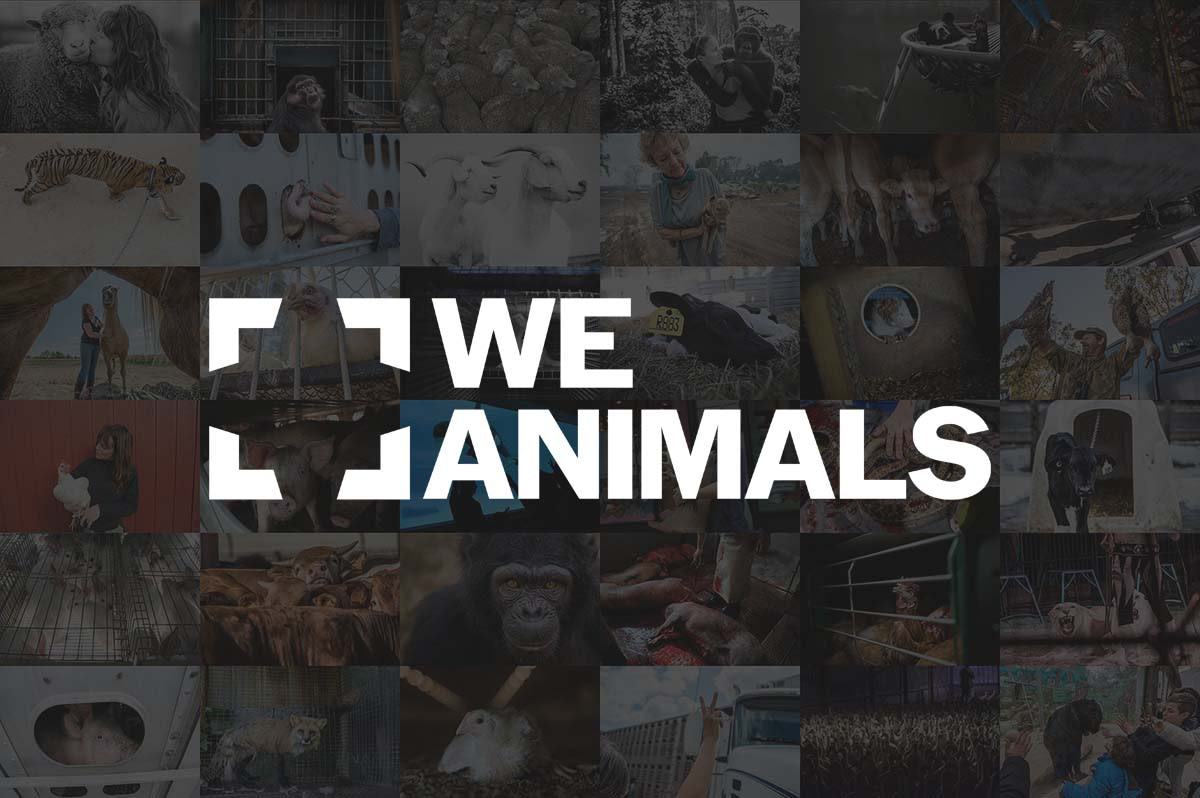In 2023, We Animals Media embarked upon an exciting brand evolution, aiming to better align our messaging, values, and visual identity with our mission to strategically advocate for animals through photojournalism.
As humanity’s use of animals expands, we decided to further define and clarify our NGO’s work, and today we are pleased to share this evolution with you.
Exposing the animals within...
Over 25 years ago, Jo-Anne McArthur took a photo of a capuchin monkey in Ecuador who was tied to a windowsill by a short chain and trained to amuse tourists. This image, and its potential for creating different conversations about animals, eventually led to what we call animal photojournalism, which reveals the experiences of animals who live among us but who we so often fail to see.
We Animals became a non-profit organization in 2019 after Jo-Anne spent two decades building it as a photographic and story-telling project that promoted the seeing and thinking about all animals.
As you know – and with the help of many of you! – we have grown our international network of animal photojournalists to over 120 contributors. They venture into farms, slaughterhouses, wet markets, and natural disasters with their cameras, putting themselves at physical and psychological risk to tell underreported stories. We are so proud of the investigations they have accomplished.
We are honoured to share their work on our stock platform, which, as of May 2024, has had well over 100,000 downloads from over 85 countries. Our visuals are used by organizations, media outlets, and individuals across the globe to inspire compassion, conversation, and change.

Stefano Belacchi / Essere Animali / We Animals
What we did and why we did it
Through these labours, we’ve refined our strategy, clarified our vision, and introduced a more active voice and energy to We Animals. We’ve updated our visual identity, which includes a new logo and a fresh website.
And yes, you read that right. We Animals. Drum roll? We’ve changed our name! Back to We Animals, which is how it all began.
Over the years, it became clear that “Media” boxed us in. Stakeholders agreed. And so we’ve shortened our name to reach beyond traditional “media” audiences. We do a lot more than “media”, but more on that soon.

Andrew Skowron / We Animals
Vision, Mission, and Purpose
Mission: We advocate for animals through photojournalism. Our global investigations and stories expose our complex relationships with animals, create ethical and cultural shifts in society, and empower human capacity for compassion and change.
The animals we eat, wear, use for entertainment, research, tradition, and work are often hidden from view, both physically and metaphorically. Unwaveringly, we use our cameras not just to look at animals but to see them and to explore how all our lives intersect with the pressing issues of our time. Our ground-breaking animal photojournalism supports the efforts of advocacy communities at large and facilitates changes in attitudes and behaviours more broadly. We understand that seeing is a crucial component of the diverse efforts necessary to erode and eventually end the abuse of animals.
Our New Tagline
Exposing the animals within our food systems
Exposing the animals within our fashion industry
Exposing the animals within research and medicine

Tone of Voice and Language
Our New Logo and Visual Identity





We Expose. We Educate. We Empower.
Looking at the suffering of animals is perhaps especially hard. To look at the suffering of animals is to face our complicity in it – we eat animals, we wear them, we test our medicines on them, and we put them in cages and arenas as entertainment.
For over 25 years, millions of people have seen and been moved by our work. With the number of animals inside factory farms growing, wild animal populations declining, and the world facing a climate crisis, now is the time to amplify our efforts.” — Jo-Anne McArthur, We Animals Founder, President, and Animal Photojournalist

Lilly Agustina / Act For Farmed Animals / We Animals
We also extend our ever-lasting gratitude to the We Animals community for your championing and support. Thank you for being by our side.
Did you know? Our stock platform offers 30,000+ photos and video clips of animal issues around the globe. Non-commercial (free) and commercial licensing available.

